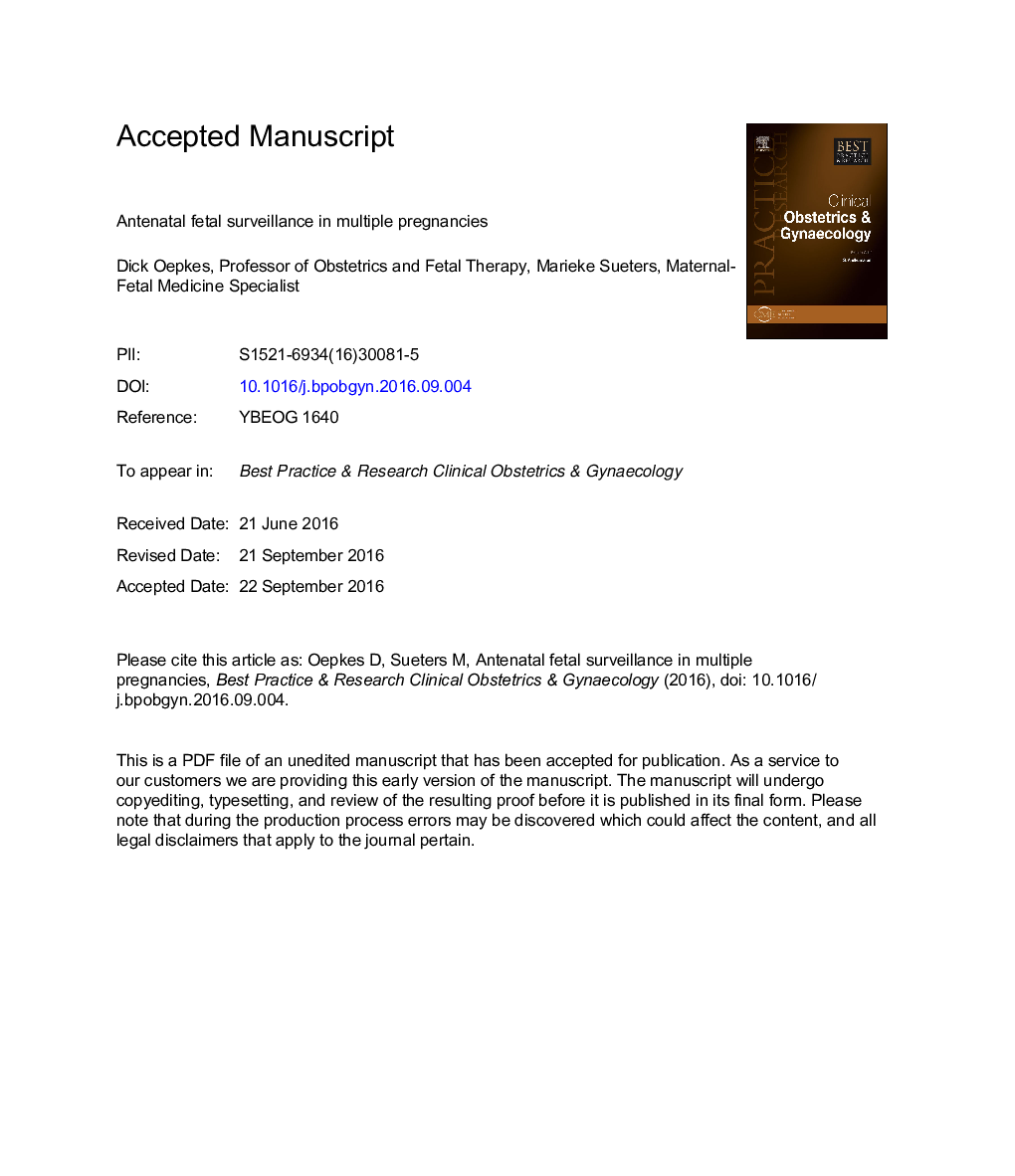| Article ID | Journal | Published Year | Pages | File Type |
|---|---|---|---|---|
| 5691533 | Best Practice & Research Clinical Obstetrics & Gynaecology | 2017 | 32 Pages |
Abstract
Multiple pregnancies occur either spontaneously or because of assisted reproduction techniques in 1-3% of pregnancies. The presence of more than one fetus in the womb is associated with a range of possible complications, both for the mother and fetuses. Early detection of these complications followed by timely and appropriate management will reduce the risk of adverse outcomes. The techniques, skills, and experience for timely detection of complications and managing them appropriately require sufficient training and exposure. Therefore, referral of women pregnant with more than one fetus to specialized clinics is preferable. One of the most essential elements of appropriate management of multiple pregnancies is early determination of chorionicity. Monochorionic and monoamniotic multiple pregnancies require additional surveillance for a whole range of specific complications that are unique to this group. Ultrasound and Doppler are the most important tools in the management of multiple pregnancies. This chapter will summarize the current best practice, in particular the use of ultrasound and Doppler, in the antenatal management of multiple pregnancies.
Related Topics
Health Sciences
Medicine and Dentistry
Obstetrics, Gynecology and Women's Health
Authors
Dick (Professor), Marieke (Maternal-Fetal Medicine Specialist),
